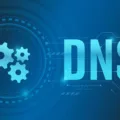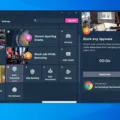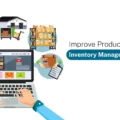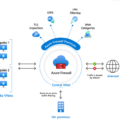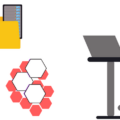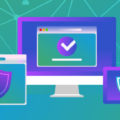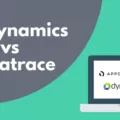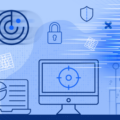Container monitoring is an essential part of managing applications deployed with Docker containers. As containers are becoming increasingly popular, it is important to have the right tools in place to monitor their performance and health. With Docker container monitoring, you can get real-time insights into your container deployments and ensure that your applications are running smoothly.
When it comes to container monitoring, there are a few different tools available to help you keep an eye on your containers’ performance. These include Sematext, Dynatrace, Datadog, Prometheus & Grafana, Elasticsearch & Kibana, SolarWinds Server & Application Monitor, and AppOptics Docker Monitoring with APM. Each of these tools offers specific features and capabilities that make them ideal for monitoring containers.
Sematext is a great choice for anyone looking for a comprehensive solution for container monitoring. It provides detailed metrics about the health of your containers as well as the ability to set up alerting and notifications when certain thresholds are met. It also allows you to compare the performance of different clusters over time so you can see how they’re performing relative to each other.
Dynatrace is another popular option when it comes to container monitoring. It provides in-depth insights into your application performance as well as detailed metrics about the health of your containers. It also has advanced analytics capabilities that allow you to easily identify issues before they become a problem.
Datadog is another great option for anyone looking for a comprehensive solution for container monitoring. It provides real-time dashboards with detailed metrics about the health of your containers as well as additional features like transaction tracing and log streaming capabilities that make it easy to monitor applications running inside Docker containers.
Prometheus & Grafana are two open-source solutions that provide powerful insights into the performance of your containerized applications in real-time by collecting and analyzing data from various sources such as Kubernetes clusters or Docker instances running on multiple hosts. They also provide detailed visualizations through customizable dashboards which make troubleshooting easier than ever before.
Elasticsearch & Kibana offer an intuitive interface with powerful search capabilities which makes it easy to find any piece of data quickly and accurately from inside a Docker environment. They also provide advanced analytics features such as anomaly detection so you can quickly identify any issues or trends in your environment before they become problems.
SolarWinds Server & Application Monitor is another great choice when it comes to monitoring Docker containers in production environments due to its ability to monitor multiple technologies from one centralized dashboard including databases, virtual machines, and cloud services such as AWS or Azure VMs or resources utilization like CPU usage or memory consumption across all hosts in a cluster at once so you can always be aware of what’s going on in your environment at all times without having to manually check each host individually every time something might go wrong.
Finally, AppOptics Docker Monitoring with APM combines two powerful tools (Application Performance Monitoring (APM) and Distributed Tracing) into one unified solution designed specifically for Docker environments so you get more visibility into how all components within an application interact with each other giving you end-to-end visibility throughout the entire stack while making sure there’s no downtime due poor performance caused by misconfigured systems or components
With these options, there’s boundless potential when it comes to gaining better operational insights into how applications deployed using docker are performing overall so that any potential issues can be addressed promptly ensuring optimal uptime and stability throughout production environments making sure everything runs smoothly 24/7/365!

Monitoring a Docker Container
Monitoring a Docker container is a critical step in ensuring the proper functioning of your containerized deployments. There are several different methods and tools available to help you monitor the health, performance, and resource utilization of your Docker containers.
Some of the most popular tools for monitoring Docker containers include Sematext, Dynatrace, Datadog, Prometheus & Grafana, Elasticsearch & Kibana, SolarWinds Server & Application Monitor, AppOptics Docker Monitoring with APM, and cAdvisor.
Sematext is a popular tool that provides real-time monitoring for Docker containers and clusters. It also offers to alert capabilities to ensure you are aware of any issues as soon as possible. Dynatrace is another great tool that provides performance monitoring and insights into your container environment. Datadog is also a popular tool for monitoring application performance and resource consumption in Docker containers.
Prometheus & Grafana provides an open-source solution for monitoring and alerting resources within your container environment. This allows you to create custom dashboards with visualizations to gain better insights into the health of your containerized applications. Elasticsearch & Kibana can be used together to monitor the performance of your applications running in containers. SolarWinds Server & Application Monitor provides detailed metrics about resource utilization within containers, allowing you to track application performance more accurately. AppOptics Docker Monitoring with APM gives you enhanced visibility into how applications running in containers are performing over time. Finally, cAdvisor is an open-source tool from Google that can provide you with real-time metrics on how much CPU, memory, and disk resources are being used by each container running on your system.
By using one or more of these tools for docker container monitoring, you can ensure that all of your deployments are running smoothly and identify any potential issues before they become major problems.
Monitoring Docker Containers for Free
Docker containers can be monitored free of charge by utilizing a range of tools. The Docker stats command is the most basic and easiest-to-use tool for monitoring Docker containers. This command provides basic metrics, such as CPU usage, memory usage, network I/O, and block I/O. For a more comprehensive view of multiple containers running inside Docker on your container host, Glances is a good choice. It offers real-time monitoring of system resources and processes on Linux systems. Portainer is another great option for monitoring Docker containers as it offers an easy-to-use graphical user interface that allows you to view all running containers and their associated metrics in one place. Zabbix Docker Monitoring Tools are also available for free and provide detailed performance metrics about your containers as well as alerting capabilities when certain thresholds are met. Checkmk monitors the health of Docker environments and gives detailed information about resource utilization and availability with its built-in dashboards. Finally, Lens and OpenLens are two open-source tools that offer an intuitive graphical user interface for monitoring the health of your containerized applications.
Monitoring Options for Docker Containers
Yes, Docker provides a variety of monitoring options for containers. Docker provides native capabilities such as logging and resource usage tracking, as well as the ability to integrate with third-party monitoring solutions such as Datadog, Prometheus, and Grafana. With these tools, you can track performance metrics like CPU utilization, memory usage, network traffic, and more. Additionally, Docker Hub’s automated build system allows you to easily build custom monitoring tools tailored to your needs. With these capabilities and tools in place, you’ll have access to comprehensive insights into the performance of your containers.
Understanding Container Monitoring
Container monitoring works by leveraging the in-built instrumentation of containers and microservices to capture, analyze and visualize data in real time. Container monitoring solutions use metric capture, analytics, transaction tracing, and visualization to monitor the performance of containers.
Metric capture includes gathering information on memory utilization, CPU usage, CPU limit, and memory limit. This data is then analyzed to provide meaningful insights about resource utilization and performance across multiple containers. Transaction tracing allows for tracking requests from start to finish, providing a clear view of how data is flowing through the system. Finally, with visualization tools, users can have a better understanding of their containerized environment as well as analysis results from metrics and traces.
Viewing Running Containers
To view the containers running on your Docker engine, you can use the “docker ps” or “docker container ls” command. This command provides a variety of options for listing and filtering all containers on the engine. By default, it will show all running containers along with useful information such as their container ID, the image they were created from when they were created, their current status, and ports that are exposed to the host. You can also use flags such as “-a” to list all containers (including stopped ones) or “-f” to filter by specific criteria. For more detailed information about each container, you can use the “docker inspect” command.
Disadvantages of Docker Containers
Docker containers offer many benefits in terms of scalability, security, portability, and resource efficiency. However, they are not without their drawbacks. The main disadvantages of Docker containers include:
1. Limited support for GUI applications: Building a rich graphical user interface (GUI) is difficult within a Docker container. As such, Docker is better suited to command line-based applications.
2. Difficult to manage large numbers of containers: As the number of containers increases, it can become difficult to manage them effectively. This can lead to conflicts between applications running on different containers and cause major performance issues.
3. Lack of cross-platform compatibility: Applications designed to run in a Docker container on one platform (e.g., Windows) can’t easily be migrated to another platform (e.g., Linux). This means that developers need to create separate versions for each platform if they want their application to be available across multiple platforms.
4. Security vulnerabilities: Although Docker provides some security features, there are still potential vulnerabilities when running applications in containers that need to be addressed. In particular, malicious code or data can be executed in a container if proper security measures are not taken into account during the development process.
Managing Containers with Services
Azure Kubernetes Service (AKS) and Azure Container Instances are two services that you can use to manage containers. AKS is a managed Kubernetes service that makes it easy to deploy and manage containerized applications. It provides an intuitive user interface and automated management features so you can focus on developing your applications instead of maintaining the underlying infrastructure.
Azure Container Instances (ACI) is a serverless service that enables you to quickly deploy and manage container-based applications without having to provision or manage any virtual machines or hardware. ACI is ideal for applications that require rapid deployment, high scalability, and cost efficiency. You can choose from Windows or Linux containers and easily scale up or down as needed.
Managing Containers with Docker
Docker is a containerization platform that helps us manage containers. Containers are isolated, lightweight environments that allow us to package and deploy applications or services quickly and easily. Docker makes it easy to create, manage, and deploy these containers in an efficient and secure manner. With Docker, we can package our applications into smaller images that can be used on any compatible host machine, allowing us to rapidly scale our application if needed. We can also use Docker Swarm services for container orchestration, which enables us to easily manage multiple containers across multiple host machines. Additionally, Docker makes it easier to set up networking between containers and configure resource limits for each container. Overall, Docker provides a secure and efficient way of managing containers on a variety of different host machines.
Conclusion
In conclusion, Docker container monitoring is a complex and necessary process for ensuring the optimal performance of your applications. It involves capturing metrics, analytics, transaction tracing, and visualization to provide insight into the performance of containers. In addition, streaming logs, tracing, and observability are needed for troubleshooting performance issues. There are a variety of Docker monitoring tools available such as Sematext, Dynatrace, Datadog, and Prometheus & Grafana that can help you monitor your Docker containers. Ultimately, by using the right Docker container monitoring tool you can ensure that your containers are running at their best.

